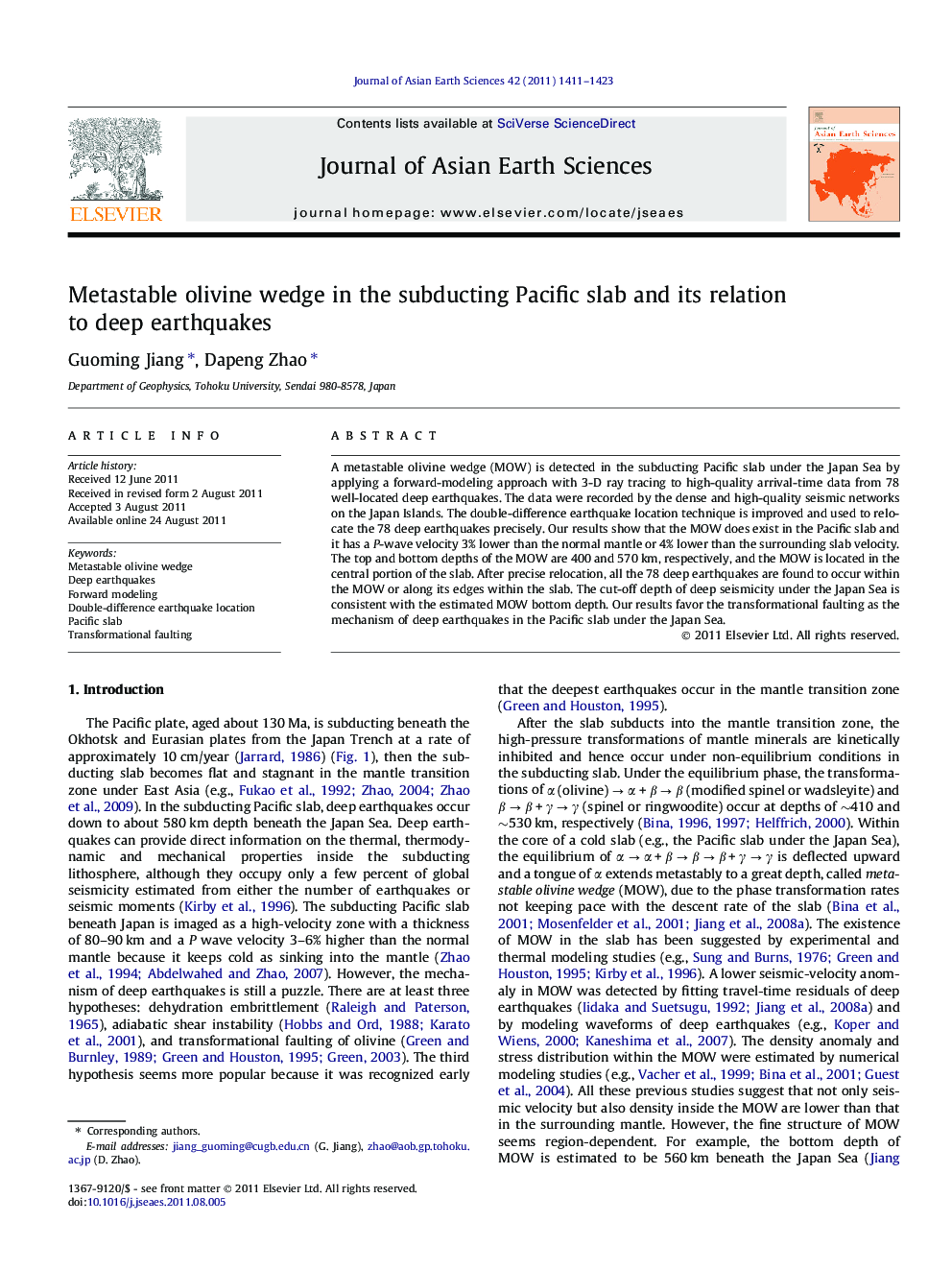| Article ID | Journal | Published Year | Pages | File Type |
|---|---|---|---|---|
| 4731704 | Journal of Asian Earth Sciences | 2011 | 13 Pages |
A metastable olivine wedge (MOW) is detected in the subducting Pacific slab under the Japan Sea by applying a forward-modeling approach with 3-D ray tracing to high-quality arrival-time data from 78 well-located deep earthquakes. The data were recorded by the dense and high-quality seismic networks on the Japan Islands. The double-difference earthquake location technique is improved and used to relocate the 78 deep earthquakes precisely. Our results show that the MOW does exist in the Pacific slab and it has a P-wave velocity 3% lower than the normal mantle or 4% lower than the surrounding slab velocity. The top and bottom depths of the MOW are 400 and 570 km, respectively, and the MOW is located in the central portion of the slab. After precise relocation, all the 78 deep earthquakes are found to occur within the MOW or along its edges within the slab. The cut-off depth of deep seismicity under the Japan Sea is consistent with the estimated MOW bottom depth. Our results favor the transformational faulting as the mechanism of deep earthquakes in the Pacific slab under the Japan Sea.
► We applied a forward-modeling method to study the metastable olivine wedge (MOW). ► We used a modified double-difference method to relocate 78 deep earthquakes. ► The result shows that the MOW with a lower velocity does exist in the Pacific slab. ► The deep earthquakes occur within the MOW or along its edges within the slab. ► The transformational faulting may be the mechanism of deep earthquakes.
